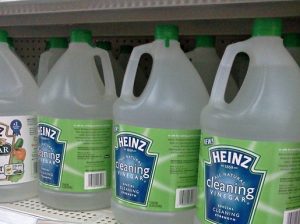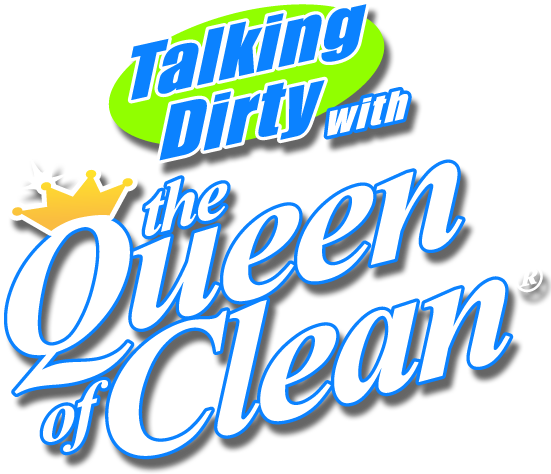CLEANING TIP SEARCH
Find your cleaning solution below
VINEGAR – WHITE OR CLEANING. WHEN, WHERE and HOW TO USE
VINEGAR – WHITE OR CLEANING. WHEN, WHERE and HOW TO USE – As seen on 3TV/Phoenix – Monday, March 5, 2018 (8:40am)
 If you follow me you know that I use a lot of white vinegar in my cleaning formulations.
If you follow me you know that I use a lot of white vinegar in my cleaning formulations.
A few weeks ago, when I was strolling through the $$$ store picking up props to use on TV, I found a vinegar that clearly stated “Cleaning Vinegar” sold in a ½ gallon container for…..yep, that’s right, a buck.
So what’s the deal with cleaning vinegar anyway? Is it a better choice when you make your own cleaners? Let me break it down.
When I use vinegar to make my favorite homemade cleaners, I always use the white distilled vinegar sold in the gallon size. This vinegar has 5% acidity and generally costs a little less than 2 cents per ounce.
Now, even in my grocery store and big box stores, I am seeing Cleaning Vinegar being sold in the food aisle by the other vinegars. This costs just a little more than 2 cents per ounce. The container indicates that the product has 6% acidity and that it’s safe for cooking and perfect for cleaning. BUT WAIT! In the cleaning aisle there is Cleaning Vinegar and it says, FOR CLEANING PURPOSES ONLY”. That means that you shouldn’t cook with it.
WHAT SHOULD YOU BUY FOR CLEANING? Whichever product is cheaper. Just don’t use cider vinegar for cleaning. It is too low in acid.
WHAT PRODUCTS SHOULD YOU NEVER MIX WITH VINEGAR?
Chlorine Bleach: Adding any weak acid to bleach will release toxic chlorine and chloramine vapors.
Castile Soap: Instead of getting the best of both (the scum cutting ability of the vinegar and the dirt transporting ability of the soap), you’ll be getting the worst of something entirely new. The vinegar takes the soap and reduces it back to its original oils. So you end up with an oily, curdled, whitish mess. And this would be all over whatever it was you were trying to clean – your laundry or counters or dishes or whatever.
Hydrogen Peroxide: These two ingredients are commonly talked about in natural cleaning methods, but combining the two IN THE SAME CONTAINER could result in a corrosive acid.
You can use them on the same surface separately while cleaning, but don’t mix them in the same container. You’ll create paracetic acid which, despite being an effective sanitizer, is potentially corrosive and irritating.
Hydrogen Peroxide and Vinegar are a great disinfectant. Spray on the hydrogen peroxide and then spray over it with white vinegar. Allow to sit 5 minutes and then rinse and dry.
MY FAVORITE WAYS TO USE WHITE VINEGAR (or Cleaning Vinegar)
MIRACLE SHOWER CLEANER
This is a fantastic cleaner for shower walls and shower doors.
1 cup DAWN Original or Ultra Dish Washing Liquid
1 cup heated white vinegar – it should be nice and warm, not hot.
Combine in a spray bottle. Spray on walls of shower and work in with a scrubbing sponge. Let sit about 15 – 30 minutes depending on how dirty it is. Scrub again with the scrubbing sponge and rinse with cold water. Cold water will keep the soap from foaming as much. You can use this on shower doors too.
Last, do the shower floor the same way.
Use care when using this solution. It will make the floor of the shower very slippery until well rinsed.
You can save any leftover solution for future use. Shake well prior to using.
WINDOW CLEANER
In a spray bottle, mix 50% distilled vinegar (white or cleaning) and 50% tap water.
For heavily soiled glass, add ½ teaspoon of dish soap to about 2 cups of the solution.
Are there some tough spots? Try rubbing hard with a cloth dipped in undiluted vinegar.
Buff dry.

